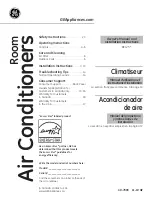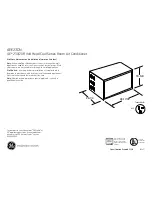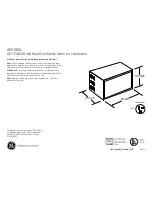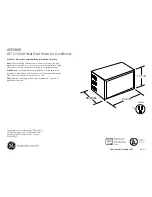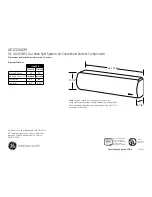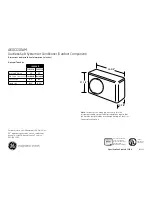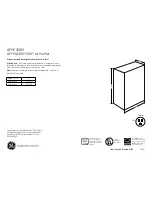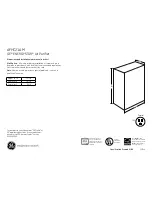
12
English
9-4 FAN OPERATION IS POSSIBLE, BUT
COOLING AND HEATING DO NOT
WORK
• Immediately after the power is turned on.
The micro computer is getting ready to operate.
Wait 10 minutes.
9-5 THE FAN STRENGTH DOES NOT COR-
RESPOND TO THE SETTING
• The fan strength does no change even if the
fan strength adjustment button in pressed.
During heating operation, when the room temper-
ature reaches the set temperature, the outdoor
unit goes off and the indoor unit changes to whis-
per fan strength.
This is to prevent cold air blowing directly on occu-
pants of the room.
The fan strength will not change even if the button
is changed, when another indoor unit is in heating
operation.
9-6 THE FAN DIRECTION DOES NOT COR-
RESPOND TO THE SETTING
• The fan direction does not correspond to the
remote control display.
The fan direction does not swing.
This is because the unit is being controlled by the
micro computer. Refer to “Adjusting the air flow
direction”.
9-7 WHITE MIST COMES OUT OF A UNIT
Indoor unit
• When humidity is high during cooling operation.
If the interior of an indoor unit is extremely con-
taminated, the temperature distribution inside a
room becomes uneven. It is necessary to clean
the interior of the indoor unit. Ask your Daikin
dealer for details on cleaning the unit. This opera-
tion requires a qualified service person.
• Immediately after the cooling operation stops
and if the room temperature and humidity are
low.
This is because warm refrigerant gas flows back
into the indoor unit and generates steam.
Indoor unit, outdoor unit
• When the system is changed over to heating
operation after defrost operation.
Moisture generated by defrost becomes steam
and is exhausted.
9-8 NOISE OF AIR CONDITIONERS
Indoor unit
• A “zeen” sound is heard immediately after the
power supply is turned on.
The electronic expansion valve inside an indoor
unit starts working and makes the noise. Its vol-
ume will reduce in about one minute.
• A continuous low “shah” sound is heard when
the system is in cooling operation or at a stop.
When the drain pump (optional accessories) is in
operation, this noise is heard.
• A “pishi-pishi” squeaking sound is heard when
the system stops after heating operation.
Expansion and contraction of plastic parts caused
by temperature change make this noise.
• A low “sah”, “choro-choro” sound is heard
while the indoor unit is stopped.
When the other indoor unit is in operation, this
noise is heard. In order to prevent oil and refriger-
ant from remaining in the system, a small amount
of refrigerant is kept flowing.
Outdoor unit
• When the tone of operating noise changes.
This noise is caused by the change of frequency.
Indoor unit, outdoor unit
• A continuous low hissing sound is heard
when the system is in cooling or defrost oper-
ation.
This is the sound of refrigerant gas flowing
through both indoor and outdoor units.
• A hissing sound which is heard at the start or
immediately after stopping operation or
defrost operation.
This is the noise of refrigerant caused by flow stop
or flow change.
9-9 DUST COMES OUT OF THE UNIT
• When the unit is used after stopping for a long
time.
This is because dust has gotten into the unit.
9-10 THE UNITS CAN GIVE OFF ODOURS
• During operation.
The unit can absorb the smell of rooms, furniture,
cigarettes, etc., and then emit it again.
9-11 THE OUTDOOR UNIT FAN DOES NOT
SPIN
• During operation.
The speed of the fan is controlled in order to opti-
mize product operation.
01_EN_3P226891-15V.fm Page 12 Friday, September 19, 2014 9:26 AM
Summary of Contents for vrv III -Q Series
Page 3: ...2 1 1 4 3 5 6 7 1 7 3 7 2 1 2 00_CV_3P226891 15V fm Page 3 Tuesday September 16 2014 6 53 PM...
Page 4: ...8 9 10 11 12 13 14 1 14 2 15 00_CV_3P226891 15V fm Page 4 Tuesday September 16 2014 6 53 PM...
Page 20: ...3P226891 15V EM14A015 1410 HT 00_CV_3P226891 15V fm Page 5 Tuesday September 16 2014 6 53 PM...























